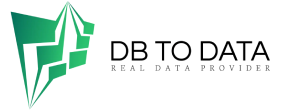At its core, a data culture is an environment where data is woven into the very fabric of daily operations and strategic planning. It means that employees across all departments—from marketing and sales to operations and human resources—understand how to access, interpret, and apply data relevant to their roles. It’s characterized by a shared belief in the power of data to reveal truths, challenge assumptions, and drive better outcomes. Instead of making decisions based on “gut feelings,” a data culture encourages an “always-ask-the-data” approach, promoting a systematic, evidence-based process for problem-solving and innovation. This requires transparency around data, easy access to relevant information, and a commitment to data literacy throughout the organization.
Leadership Buy-In: The Cornerstone
The single most critical element in building a data dataset culture is strong leadership buy-in and championship. Without unwavering support from the top, any data initiative is likely to falter. Leaders must not only advocate for data usage but also embody the data-driven mindset themselves, demonstrating how they use data to inform their own decisions. They need to articulate a clear vision for how data will transform the organization, communicate the value proposition of data to all employees, and allocate the necessary resources—financial, technological, and human—to support the cultural shift. This includes investing in data infrastructure, analytical tools, and comprehensive training programs. When leadership actively promotes data literacy, rewards data-driven behaviors, and holds teams accountable for leveraging insights, it sends a powerful message that data is a strategic priority, effectively setting the tone for the entire organization and encouraging adoption from the ground up.
Fostering Data Literacy and Skills
A data culture cannot thrive unless employees possess the the impact of color correction in phone editing necessary data literacy and skills. This doesn’t mean everyone needs to be a data scientist, but rather that individuals understand the basics of data, how to interpret common data visualizations, the limitations of data, and how to ask meaningful questions of it. Organizations must invest in continuous aub directory learning programs, workshops, and accessible resources to upskill their workforce. This could range from introductory courses on spreadsheet analysis and dashboard interpretation for business users to more advanced training in statistical methods and data modeling for analysts. The goal is to demystify data, making it approachable and empowering employees to confidently interact with data insights relevant to their daily tasks. By democratizing data knowledge, organizations can tap into the collective intelligence of their workforce, enabling more informed decision-making at every level, reducing

